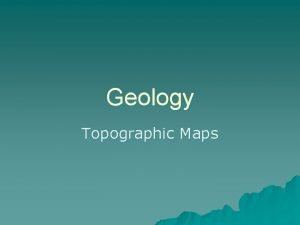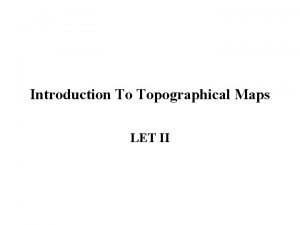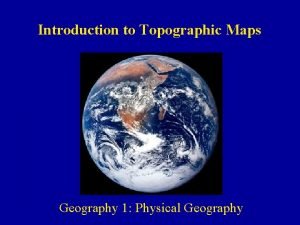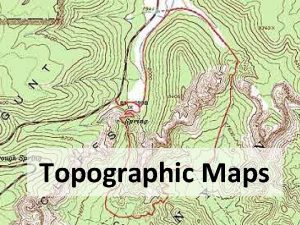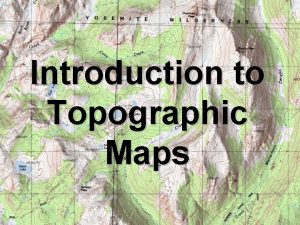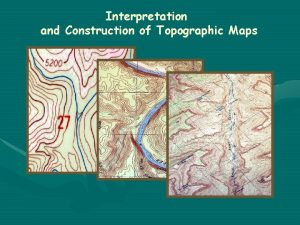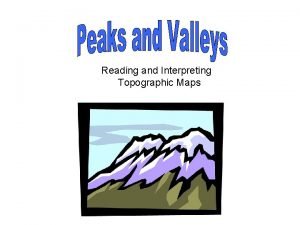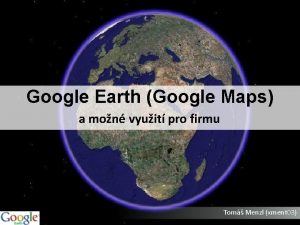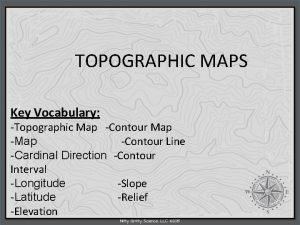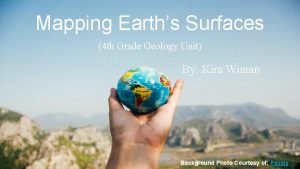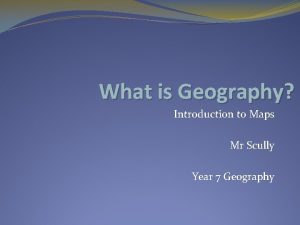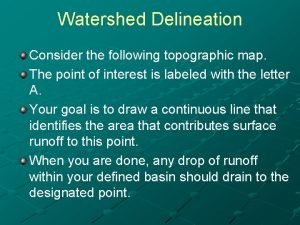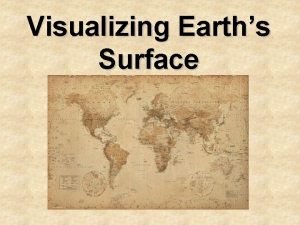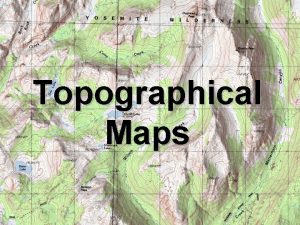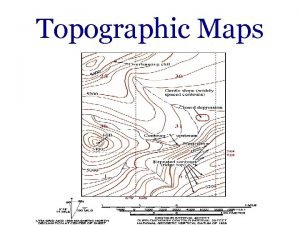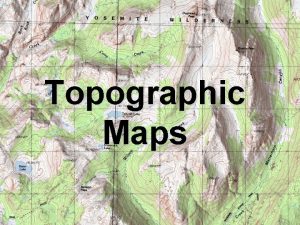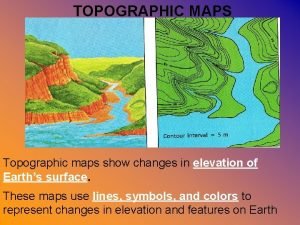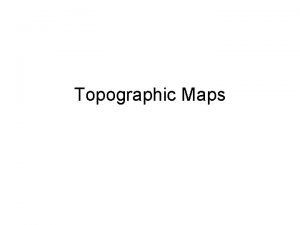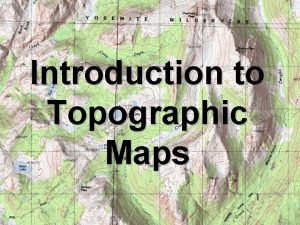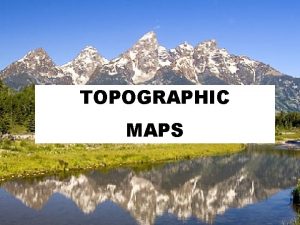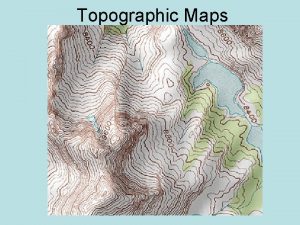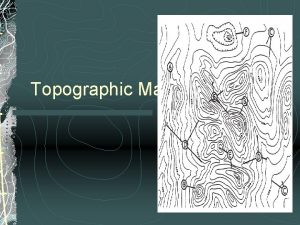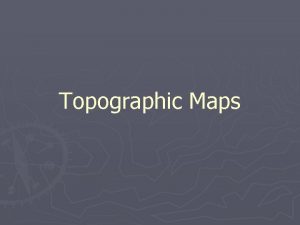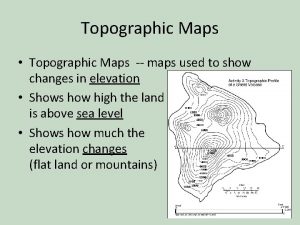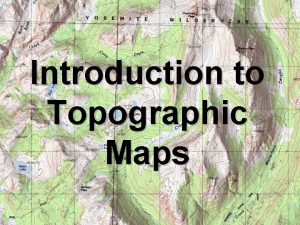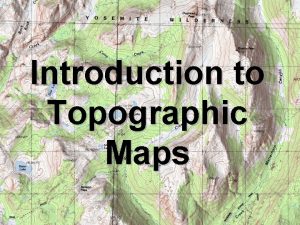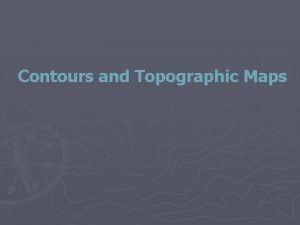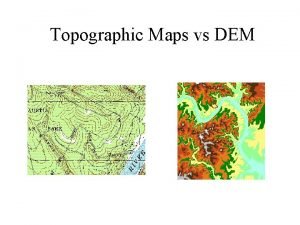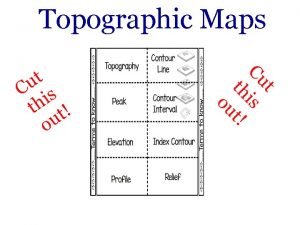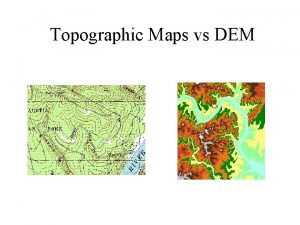Topographic Maps What is a Topographic Map A




















- Slides: 20

Topographic Maps

What is a Topographic Map? • A topographic map shows the shapes and elevations (the height) of land with contour lines • Contour lines: lines that connect places with the same elevations • For example, if the number 5 is written on a contour line of a topographic map, you know that every place along that line is 5 metres high.

Zero is sea level Highest point

What’s On a Topographic Map • Built-Up Areas: roads, buildings, urban development, boundaries, railways, power lines • Water: lakes, rivers, streams, swamps, rapids • Relief: mountains, valleys, slopes, depressions • Vegetation: wooded and cleared areas, vineyards and orchards • Labels: place names, water feature names, highway names

Who Uses These? People use topographic maps for: • Engineering • Conservation • Environmental management • Urban planning • Outdoor activities like fishing, hiking, or camping

Draw the outline of the mountain

Contour Intervals and Index Contours • Contour interval: the space between the contour lines. • Index Contour: Every fifth contour line labelled and wider than the other lines.

The Spacing Between Contour Lines • If the contours are close together, you're looking at a steep slope. • If the contours have wide spaces in between -- or aren't there at all -- the terrain is relatively flat. • Contour lines never cross or touch each other

Shading • Besides just the colour, patterns can be used to show certain features

Symbols

Forks of the Credit

Mt Everest

Topographic Toronto • https: //www. arcgis. com/home/webmap/view er. html? webmap=7124343 a 21 cb 4 bb 1 a 99 bbd 8 f 1 e 2 a 1 fa 8 – Select “Topographic” under Basemap option

Topographic Map Answers • 1. Contour interval = 20 m • 2. Elevation of Hill B = 220 m • 3. Direction of Blue River = Northeast – it flows into the ocean • 4. don’t bother • 5. Elevation of Point F = 160 m • 6. Lowest elevation on map = shoreline 0 m • 7. Steepest side of Pine Peak = Southeast slope • 8. Elevation of nearest line to bridge = 120 m

PRACTICING CONTOUR LINES

Practice Tips 1. Start at either the highest or lowest number you can find 2. Connect numbers that are the same, draw your line right over the numbers 3. Your line can only go between two numbers (one that is higher than it and one that is lower than it) 4. If there are no numbers available to connect with it – you can either turn it back on itself and make a circular shape, or lead it off the page if you can 5. Contour lines bend upstream and form a V when crossing a stream

6. Contour lines can cross small streams but not wider bodies of water 7. Contour lines can’t cross each other 8. Rivers always flow in the opposite direction from the way the contour lines bend (the V points uphill/upstream) 9. Water flows downhill 10. If you see contour lines with hashmarks on them, it is showing a depression (a decrease in elevation)

Drawing Contour Lines Worksheet Answers


 Whats a topographic map
Whats a topographic map Topographic map marginal information
Topographic map marginal information Introduction to topographic maps
Introduction to topographic maps What are index contour lines on a topographic map
What are index contour lines on a topographic map A topographic map is a two dimensional model
A topographic map is a two dimensional model Construction and interpretation of relief profile
Construction and interpretation of relief profile Hachure lines topographic map
Hachure lines topographic map Topographic maps show
Topographic maps show Topographic map vocabulary
Topographic map vocabulary Topographic map
Topographic map Independent practice: topographic maps
Independent practice: topographic maps Google maps reittihaku
Google maps reittihaku Topographic map definition ap human geography
Topographic map definition ap human geography Watershed delineation
Watershed delineation Hachure marks examples
Hachure marks examples A topographic map is a two dimensional model
A topographic map is a two dimensional model Topographic map worksheet answer key
Topographic map worksheet answer key A topographic map is a two dimensional model
A topographic map is a two dimensional model Maps that show changes in elevation of earth's surface
Maps that show changes in elevation of earth's surface Contour index lines
Contour index lines A topographic map is a two dimensional model
A topographic map is a two dimensional model
